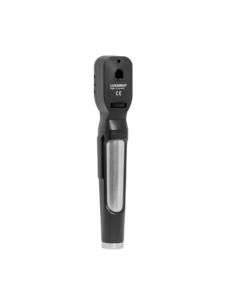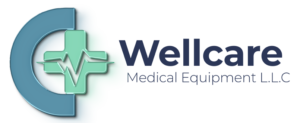OPTHALMOSCOPE
The LUXAMED® ophthalmoscopes fully comply with all requirementsof DIN EN ISO 10942 and are therefore group A devices.
direct ophthalmoscope in pocket size
correction values: + 20 bis – 20 D (± 1 2 3 4 6 8 10 15 20 D)
5 different apertures: Fixation cross, large circle, small circle, semicircle, green filter
illumination: LED illumination can be dimmed for an individual glare-free brightness
automatic switchoff after 3 minutes
life expectancy of LEDs: approx. 50.000 hours by constant current drive
colour temperature: approx. 4.200 K
optimized design of head
two-component handle (aluminium / fibre-glass reinforced), also combinable with LuxaScope LED otoscope- and dermatoscope head
electronic ON/OFF push-button switch
power supply: 1 lithium-ion rechargeable battery 3.7 V, inclusive incl. recharger with USB plug (adapter EU/UK/US)

OPTHALMOSCOPE supplier UAE
OPTHALMOSCOPE supplier Abu Dhabi
OPTHALMOSCOPE supplier Dubai
OPTHALMOSCOPE supplier Sharjah
OPTHALMOSCOPE supplier Ajman
OPTHALMOSCOPE supplier Ras Al Khaimah
OPTHALMOSCOPE supplier Fujairah
OPTHALMOSCOPE Umm Al Quwain
An ophthalmoscope is a specialized medical instrument used by eye care professionals to examine the internal structures of the eye, including the retina, optic nerve, blood vessels, and macula. This device plays a crucial role in diagnosing and monitoring various eye conditions such as glaucoma, diabetic retinopathy, macular degeneration, and retinal detachment. The ophthalmoscope works by shining a beam of light into the eye, allowing the examiner to visualize the inner eye structures through the pupil. It consists of a light source, a set of lenses to adjust focus, and a viewing aperture. The device enables doctors to detect abnormalities, infections, or degenerative conditions that may affect vision. Early detection of such issues is vital for preventing vision loss and ensuring proper treatmen
There are two main types of ophthalmoscopes: the direct and indirect ophthalmoscope. The direct ophthalmoscope is a small, handheld device that provides a magnified, upright image of the retina. It is commonly used for routine eye examinations in clinics and hospitals. On the other hand, the indirect ophthalmoscope is a larger device, often mounted on a headband, that provides a wider, inverted view of the retina. This type of ophthalmoscope is especially useful for examining the peripheral retina and diagnosing more complex eye conditions. The indirect ophthalmoscope requires additional equipment, such as a condensing lens, to obtain a detailed view. Both types of ophthalmoscopes are essential tools in ophthalmology and optometry, helping eye specialists assess a patient’s ocular health accurately. Over time, advancements in technology have improved the functionality of ophthalmoscopes, making them more efficient and precise in diagnosing eye disea
Eye equipment refers to a wide range of medical devices and instruments used by ophthalmologists, optometrists, and other eye care professionals for diagnosing, treating, and managing various eye conditions. These tools play a critical role in examining the structure and function of the eye, helping detect diseases such as glaucoma, cataracts, macular degeneration, and diabetic retinopathy. One of the most commonly used instruments is ophthalmoscope, a handheld device that allows doctors to examine the retina, optic nerve, and blood vessels inside the eye. It works by shining a beam of light through the pupil, enabling the examiner to detect abnormalities such as bleeding, swelling, or changes in the optic nerve that might indicate serious conditions like glaucoma or hypertension. Another essential tool is the slit lamp, a microscope combined with a high-intensity light source, which provides a magnified, three-dimensional view of the eye. The slit lamp is crucial for evaluating the cornea, lens, iris, and anterior chamber, allowing for early diagnosis of conditions such as cataracts, corneal ulcers, and dry eye syndrome
Additionally, tonometers are widely used to measure intraocular pressure (IOP), which is vital in detecting and managing glaucoma, a condition that can lead to irreversible blindness if left untreated. The most common type, the Goldmann applanation tonometer, is attached to a slit lamp and measures IOP by gently flattening the cornea. Other types, such as the non-contact tonometer, use a puff of air to assess eye pressure without touching the eye, making them more comfortable for patients. Another crucial device is the autorefractor, which helps determine a patient’s refractive error by analyzing how light is bent as it enters the eye. This equipment is particularly useful in prescribing eyeglasses or contact lenses, ensuring accurate vision correction. For more advanced diagnostic purposes, the optical coherence tomography (OCT) scanner is an imaging device that provides detailed cross-sectional images of the retina. It helps detect and monitor diseases like diabetic retinopathy and macular degeneration by revealing subtle changes in retinal layers that may not be visible with a standard ophthalmoscope
Other essential eye care equipment includes retinoscopes, which help determine a patient’s prescription by analyzing the reflection of light off the retina, and keratometers, which measure the curvature of the cornea, crucial for fitting contact lenses and diagnosing conditions like keratoconus. Surgeons rely on advanced tools such as the phacoemulsification machine, which uses ultrasound technology to break up and remove cataracts before implanting an artificial intraocular lens. Laser systems like the excimer laser are used in refractive surgeries, including LASIK, to reshape the cornea and correct vision problems such as myopia, hyperopia, and astigmatism. The field of ophthalmology continues to evolve with advancements in technology, leading to more precise, non-invasive, and patient-friendly diagnostic and treatment options. With the continuous development of sophisticated eye equipment, early detection and effective management of eye diseases have become more accessible, significantly improving patient outcomes and preserving vision health worldwidetttt








Joseph VT –
Good product ⭐️⭐️⭐️⭐️⭐️
The LUXAMED® ophthalmoscopes fully comply with all requirementsof DIN EN ISO 10942 and are therefore group A devices.
direct ophthalmoscope in pocket size
correction values: + 20 bis – 20 D (± 1 2 3 4 6 8 10 15 20 D)
5 different apertures: Fixation cross, large circle, small circle, semicircle, green filter
illumination: LED illumination can be dimmed for an individual glare-free brightness
automatic switchoff after 3 minutes
life expectancy of LEDs: approx. 50.000 hours by constant current drive
colour temperature: approx. 4.200 K
optimized design of head
two-component handle (aluminium / fibre-glass reinforced), also combinable with LuxaScope LED otoscope- and dermatoscope head
electronic ON/OFF push-button switch
power supply: 1 lithium-ion rechargeable battery 3.7 V, inclusive incl. recharger with USB plug (adapter EU/UK/US)